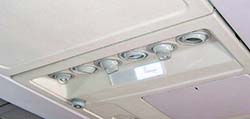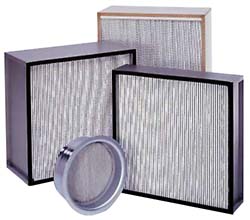You travel on a flight and when you get home you always seem to have a cold or other health related annoyance — is the airliner the cause? Possibly, but the total answer may be a little more complicated. Major airliner manufacturers install components in the airliner to protect the health of passengers and although their methodology varies somewhat be assured that your comfort and health are a high consideration.
Typically the air supplied to the cabin is a 50-50 mix of recirculated air and outside air. The outside air is introduced through a sealed area adjacent to the engine compartment so the introduced air can be heated to an appropriate temperature level. The air temperature at 25,000 feet can be thirty degrees below zero. The outside air is then mixed with recirculated air from the cabin and introduced back into the cabin through vents, including those little air vent controls that are found above each seat. In most designs the air is removed near the cabin floor after which some air is exhausted and the remainder is recirculated.
The recirculated air is passed through industrial grade HEPA filters that are capable of removing particles that are hundreds of times smaller than the eye can see. Airliner manufacturer’s say that between 94 and 99.9 percent of airborne microbes are captured, and that there is a total changeover of all of the cabin air every two or three minutes.
Clearly these manufacturers have considered the health of passengers in airliner design as this design is way in advance of what you would find in offices, schools, assembly areas or other common places of human gathering.
The germs that a compromised individual can introduce through sneezing, coughing and even talking can still be a problem primarily because of the close proximity of passengers in a confined space. There is still a period where those germs may be local to your breathing zone or they can land on a surface where they may remain viable anywhere from seconds to hours depending upon the germ.
To reduce your probability of breathing in these contaminants turn the air vent above your seat on and aim the clean air current slightly in front of your face so that germs from infectious passengers that are nearby will be redirected away from you. It is also prudent to avoid touching surfaces that may be adjacent to infected passengers. Although protection systems are in place, they are not perfect. The use of common sense germ avoidance hygiene can go a long way in protecting your health.





